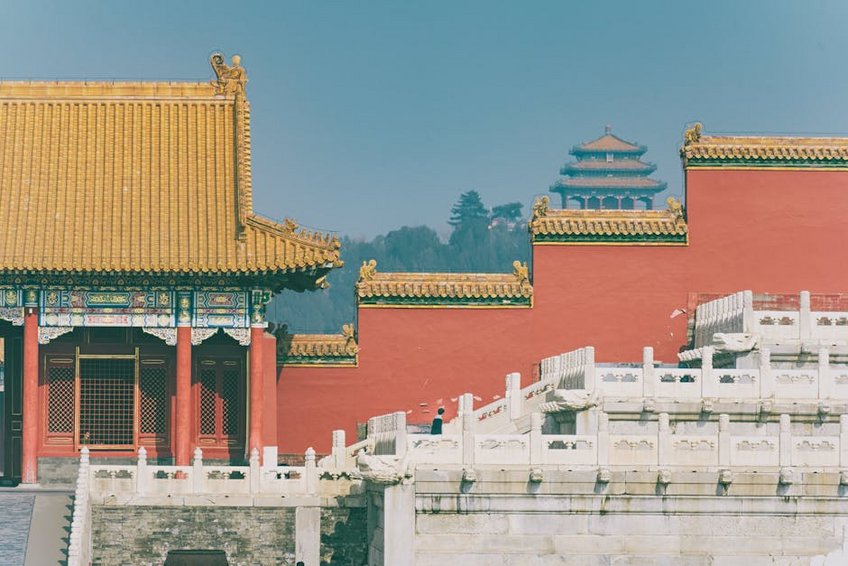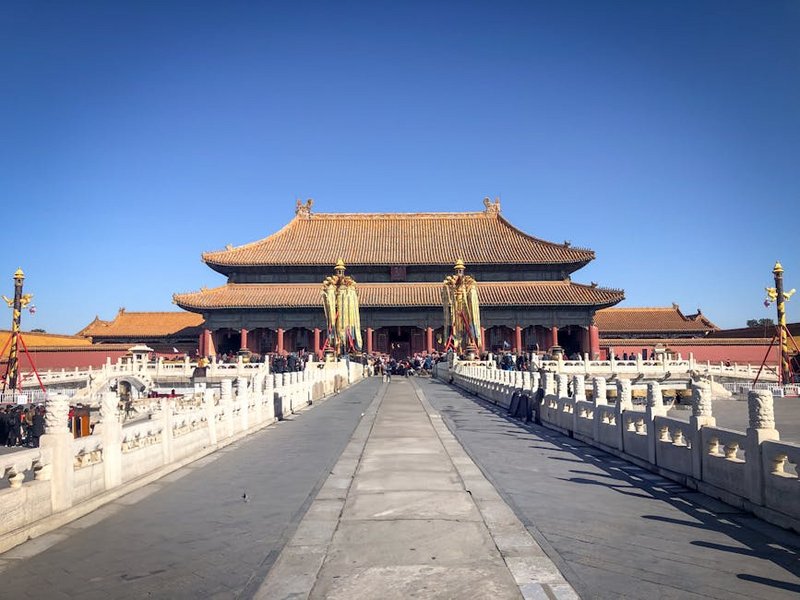Beijing Forbidden City: Your Ultimate Visitor’s Guide
Stepping into the Beijing Forbidden City feels like traveling back in time to the heart of imperial China. This magnificent palace complex, officially known as the Palace Museum, served as the Chinese imperial palace from the Ming dynasty to the end of the Qing dynasty, housing 24 emperors over nearly 500 years. As the world’s largest palace complex, covering 180 acres with 980 surviving buildings, the Beijing Forbidden City represents one of humanity’s most significant architectural achievements. You’ll walk through history as you explore grand halls, intricate courtyards, and beautiful gardens that once were accessible only to the emperor, his family, and selected officials. Today, this UNESCO World Heritage Site welcomes millions of visitors who come to marvel at its grandeur and learn about China’s rich cultural heritage. Proper planning will help you make the most of your visit to this incredible destination that offers a profound glimpse into China’s imperial past.
Beijing Forbidden City Essential Information
Before visiting the Beijing Forbidden City, it’s crucial to understand its historical significance and practical details. Construction began in 1406 under the Yongle Emperor of the Ming Dynasty and took 14 years to complete, utilizing over one million workers. The complex follows strict traditional Chinese palatial architecture principles, with all major buildings aligned along a north-south central axis, reflecting ancient Chinese philosophy and cosmology. The name “Forbidden City” comes from the fact that common people were forbidden from entering without special permission during imperial times. Today, it operates as the Palace Museum, housing an extensive collection of artwork and artifacts from the Ming and Qing dynasties. You’ll want to allocate at least half a day to properly explore the main highlights, though history enthusiasts might want to spend a full day immersing themselves in this incredible site.
Operating Hours and Ticket Information
- The Beijing Forbidden City is open Tuesday through Sunday from 8:30 AM to 5:00 PM (April to October) and 8:30 AM to 4:30 PM (November to March), closed on Mondays except for national holidays.
- Ticket prices are approximately $8-12 USD depending on the season, with additional fees for special exhibitions. You must book tickets online in advance through the official website as walk-up tickets are rarely available.
- Consider purchasing the combo ticket that includes access to the Clock and Treasure Galleries, which house some of the most impressive artifacts in the collection.
- Budget travelers can expect to spend $15-25 USD per person covering entry ticket, basic audio guide, and public transportation to and from the site.
- Mid-range visitors might budget $50-80 USD including upgraded guided tour, combination tickets with special exhibitions, lunch at nearby restaurants, and taxi transportation.
- Luxury experiences can reach $150-300 USD with private expert guides, VIP access to less-crowded areas, fine dining nearby, and private car service with driver.
- The Palace Museum Official Website
- UNESCO World Heritage Centre
Best Entry Points and Navigation Tips
You’ll enter the Beijing Forbidden City through the Meridian Gate (Wumen) in the south and exit through the Gate of Divine Prowess (Shenwumen) in the north. This one-way routing helps manage the large crowds and ensures you see the complex in historical order. Immediately after entering, you’ll cross the Golden Water River via five marble bridges representing the five virtues Confucius taught. Download a map beforehand or rent an audio guide at the entrance to help navigate the vast complex. The central axis contains the most important buildings, while the eastern and western routes offer quieter pathways and additional exhibitions. Wear comfortable walking shoes as you’ll be covering significant distance on uneven surfaces throughout your visit.

Beijing Forbidden City Planning Your Trip
Proper planning transforms your Beijing Forbidden City visit from overwhelming to extraordinary. The complex receives over 80,000 daily visitors during peak seasons, making advance preparation essential. Start by checking the official website for any temporary closures or special events that might affect your visit. Consider combining your trip with nearby attractions like Tiananmen Square, which sits directly south of the Forbidden City, and Jingshan Park across the street from the north exit, offering spectacular overhead views of the entire palace complex. Spring and autumn provide the most pleasant weather conditions, with mild temperatures and beautiful seasonal colors enhancing your experience. If you’re visiting during summer, arrive early to avoid both crowds and the intense midday heat that can make exploring the largely unshaded courtyards uncomfortable.
Best Time to Visit Beijing Forbidden City
The optimal times to visit the Beijing Forbidden City are April-May and September-October when temperatures range from 50-75°F (10-24°C) with lower humidity and clearer skies. These months offer comfortable walking conditions and beautiful seasonal scenery—cherry blossoms in spring and golden ginkgo leaves in autumn. Summer months (June-August) can be extremely hot and humid, with temperatures often exceeding 86°F (30°C) and higher rainfall, though early mornings remain pleasant. Winter (November-February) brings colder temperatures sometimes dropping below freezing, but fewer crowds and the possibility of seeing the palace dusted with snow creates a magical atmosphere. Weekdays typically see smaller crowds than weekends, and arriving right at opening time ensures you experience the complex with relative peace before tour groups arrive.
Budget Planning and Costs
Essential Preparation Checklist
Preparing properly for your Beijing Forbidden City visit ensures a comfortable and enriching experience. First, book your tickets online at least 3-7 days in advance through the official Palace Museum website, as same-day tickets are rarely available. Bring your passport, which is required for entry and matches your ticket reservation. Wear comfortable walking shoes with good support as you’ll be walking on uneven stone surfaces for several hours. Pack sunscreen, a hat, and sunglasses for protection against the sun in the large open courtyards. Bring a refillable water bottle—there are water stations throughout the complex. Consider downloading a map or guide app beforehand since cellular service can be inconsistent within the thick palace walls. If you plan to visit multiple attractions, purchase a transportation card for easy access to Beijing’s subway and bus system.
Beijing Forbidden City Top Attractions and Activities
The Beijing Forbidden City contains countless treasures, but several highlights deserve special attention during your visit. The complex divides into two main parts: the Outer Court where the emperor exercised supreme power over the nation, and the Inner Court where the imperial family lived. Along the central axis, you’ll find the most magnificent halls including the Hall of Supreme Harmony, Hall of Central Harmony, and Hall of Preserving Harmony—these formed the ceremonial heart of imperial power. The Outer Court also includes the magnificent Gate of Supreme Harmony and the Imperial Garden, a classical Chinese garden that offered respite to the imperial family. The Inner Court features the Palace of Heavenly Purity, Hall of Union, and Palace of Earthly Tranquility, where the emperor and his family conducted their daily lives. Beyond the central axis, the Six Eastern Palaces and Six Western Palaces housed concubines and now host various museum exhibitions.
Must-See Highlights
No visit to the Beijing Forbidden City is complete without seeing these iconic locations. The Hall of Supreme Harmony represents the architectural and ceremonial centerpiece—the largest hall in the complex where emperors were enthroned and celebrated important ceremonies. Its double-eaved roof features magnificent imperial yellow glazed tiles and intricate dragon decorations. The Palace of Heavenly Purity served as the emperor’s audience hall and living quarters, while the Hall of Union contained the imperial seals. The Clock Exhibition Hall in the Fengxian Palace displays an impressive collection of elaborate timepieces gifted to Qing emperors by European dignitaries. The Treasure Gallery in the Palace of Tranquil Longevity showcases gold, jade, and precious stone items used by the imperial family. Finally, the Imperial Garden at the northern end offers a beautiful example of classical Chinese garden design with ancient cypress trees, rockeries, and pavilions.
Hidden Gems and Local Favorites
Beyond the main tourist path, the Beijing Forbidden City contains several less-crowded areas that offer deeper insight into imperial life. The Six Eastern Palaces and Six Western Palaces, which housed the emperor’s concubines, now host rotating exhibitions that many visitors overlook. The Juanqinzhai (Studio of Exhaustion from Diligent Service) in the northeast corner represents one of the most exquisitely preserved interiors from the Qianlong Emperor’s retirement years. The Nine Dragon Screen behind the Palace of Tranquil Longevity is one of only three remaining imperial nine-dragon walls in China, featuring brilliantly colored glazed tiles. For photography enthusiasts, the corner towers offer magnificent architectural details without the crowds found along the central axis. Many local visitors recommend exiting through the神武门 (Gate of Divine Might) and immediately crossing the street to Jingshan Park, where you can climb to the pavilion atop the hill for breathtaking panoramic views of the entire palace complex.
Beijing Forbidden City Practical Travel Information
Navigating Beijing and accessing the Forbidden City requires understanding the city’s transportation systems and local customs. The palace sits at the exact center of Beijing, making it easily accessible from anywhere in the city. Beijing’s efficient subway system offers the most reliable transportation—take Line 1 to Tiananmen East or Tiananmen West stations, both within walking distance of the entrance. Taxis and ride-sharing services are plentiful but subject to traffic congestion, especially during peak hours. When approaching the complex, you’ll first pass through Tiananmen Square and under the portrait of Mao Zedong on the Tiananmen Gate tower before reaching the Meridian Gate entrance. Security checks are thorough but efficient—avoid bringing large bags or prohibited items to speed up entry. Inside the complex, signage appears in Chinese and English, though the English translations can sometimes be minimal or poetic rather than informative.
| Category | Options/Features | Price Range (USD) |
|---|---|---|
| Guided Tours | Audio guide, group tour, or private expert guide | $5-150 |
| Transportation | Subway, bus, taxi, or ride-sharing services | $1-15 |
| Nearby Dining | Street food, local restaurants, or hotel dining | $5-50 |
| Souvenirs | Books, replicas, postcards, or specialty items | $3-100 |


